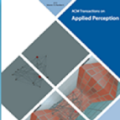The basic goal of survivable network design is to build cheap networks that guarantee the connectivity of certain pairs of nodes despite the failure of a few edges or nodes. A celebrated result by Jain [Combinatorica'01] provides a 2-approximation for a wide class of these problems. However nothing better is known even for very basic special cases, raising the natural question whether any improved approximation factor is possible at all. In this paper we address one of the most basic problems in this family for which 2 is still the best-known approximation factor, the Forest Augmentation Problem (FAP): given an undirected unweighted graph (that w.l.o.g. is a forest) and a collection of extra edges (links), compute a minimum cardinality subset of links whose addition to the graph makes it 2-edge-connected. Several better-than-2 approximation algorithms are known for the special case where the input graph is a tree, a.k.a. the Tree Augmentation Problem (TAP). Recently this was achieved also for the weighted version of TAP, and for the k-edge-connectivity generalization of TAP. These results heavily exploit the fact that the input graph is connected, a condition that does not hold in FAP. In this paper we breach the 2-approximation barrier for FAP. Our result is based on two main ingredients. First, we describe a reduction to the Path Augmentation Problem (PAP), the special case of FAP where the input graph is a collection of disjoint paths. Our reduction is not approximation preserving, however it is sufficiently accurate to improve on a factor 2 approximation. Second, we present a better-than-2 approximation algorithm for PAP, an open problem on its own. Here we exploit a novel notion of implicit credits which might turn out to be helpful in future related work.
翻译:生存网络设计的基本目标是建设廉价网络, 保证某些节点对口的连接性, 尽管有几个边缘或节点都失败了。 Jain [Combinatorica'01] 的一个值得庆贺的结果为这些问题的一大类提供了2个协议。 然而,即使对于非常基本的特例, 也没有任何比这更好的更好的办法, 由此自然产生了一个问题: 是否有任何改进的近点系数是可能的。 在本文中, 我们讨论的是这个家族中的一个最基本的问题, 其中2个仍然是最著名的近效系数, 森林放大问题: 是一个没有方向的未加权的路径图( 然而, 我们的路径的路径收集是一个森林 ) 和一系列额外的边际( 链接 ) 。 但是, 一个最小的基点是最小化的基点, 我们的直径的直径直路径直值, 一个连接的直径直值的基点, 一个连接到直径直的直径直值 。



